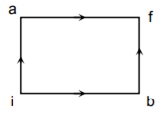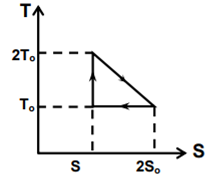Derive an expression for the work done during Isothermal expansion
Work done during isothermal expansion of 1 mole of ideal gas
W = ∫ dW
v2
W = ∫ Pd V - - - - ( I )
v1
For 1 mole of gas
PV = RT
P = RT / V
Putting value of P in eqn ( I ).,
v2
W = ∫ RT / V dV
v1
v2
W = RT ∫ 1 / V dV
v1
v2
W= RT [ log e V]
v1
W = RT [ log e V2 - log e V1 ]
W = 2.303 RT log 10 V2 / V1
For constant temperature,
W = 2.303 RT log 10 P2 / P1












